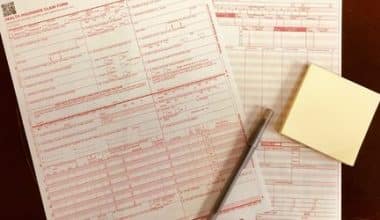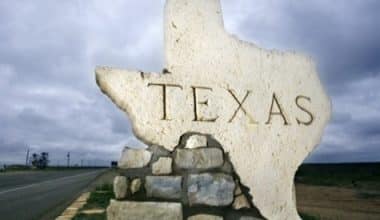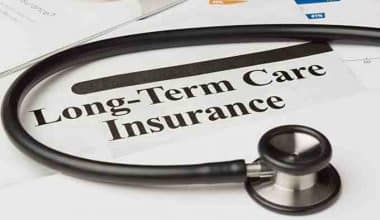State Farm is one of the largest and most trusted insurance companies in the United States. It offers a wide range of coverage options, including earthquake insurance.
Basically, State Farm earthquake insurance can help to protect your home and belongings from earthquake damage. It can also help cover the cost of additional living expenses, such as hotel and restaurant bills if you cannot live in your home after an earthquake.
But the question is, “Should you go for State Farm’s earthquake insurance coverage against the others available?” By the end of this article, you’ll be able to answer this question in seconds.
Overview
| BBB Ratings | B |
| States Served | 50 |
| Age of Company | 93 |
| AM Best Ratings | A+ |
State Farm is a well-known insurance industry leader. It offers a wide range of personal and business insurance to customers in all 50 states. Earthquake insurance is one of their insurance products. In the event of an earthquake, this provides coverage for personal injury and property damage.
State Farm Earthquake Insurance Review
Structures Covered
| Apartment | Yes |
| Condo | Yes |
| Townhouses | Yes |
| Single-Family Home | Yes |
| Offices | Yes |
State Farm Insurance has expanded its earthquake insurance coverage to include condominiums, townhouses, apartments, single-family homes, and offices. As long as it is stated in the policy, the company will cover repairs and replacements.
Coverage & Protection
| Personal Belongings | Yes |
| Appliances | Yes |
| Furniture | Yes |
| Personal Injury | Yes |
| Electrical and Plumbing System | Yes |
| Debris Removal | Yes |
| Broken Glass Clean-Up | Yes |
| Residential | Yes |
| Commercial | Yes |
State Farm’s plans include debris removal, broken glass cleanup, electrical and plumbing services in addition to basic coverage and protection. Residential and commercial properties are both covered and protected.
Plan Details
| Minimum Coverage | Not Specified |
| Maximum Coverage | Not Specified |
| Annual Plan | Yes |
| Mobile Access | Yes |
| Sample Policy | None |
| Privacy Policy | Yes |
State Farm offers a free mobile app that can be downloaded. You can use this app to browse and manage your policy, make claims, and change coverage. However, changes must be approved before they take effect.
Discounts
| Multi-Policy Discount | Yes |
| Loyalty Discount | Yes |
| Claim-Free History | Yes |
| Other Discounts | None |
State Farm’s discount options assist customers in saving money on their premiums. Multi-policy discounts are available to clients who have more than two policies.
Help, Support and Usability
| Online Account Management | Yes |
| Coverage Calculator | Yes |
| Live Chat | No |
| Telephone Support | Yes |
| 24 Hour Telephone Claims | No |
| Online Claims | Yes |
| Online Quotations | Yes |
| Yes | |
| FAQs | No |
State Farm offers a variety of channels for easy communication between its agents and clients. Online account management, phone support, email, online claims, and online quotes are all included.
Is Earthquake Damage Covered by My State Farm Homeowners Insurance?
No, earthquake damage is not covered by a standard State Farm homeowner insurance policy in Alaska. However, if the resulting fire loss is insured, State Farm will pay for any accidental direct physical loss by fire caused by earth movement.
If the risk is eligible, earthquake damage insurance can be added as an endorsement to your State Farm homeowners insurance policy. Customers with questions about the earthquake endorsement should contact a State Farm agent in their area.
What Are My First Steps?
Following the filing of a claim, a State Farm claims specialist will contact you to discuss the extent of the damage and what is covered under your policy.
PleaContact your claims specialist if you have any questions during the claims process. We understand that this can be a difficult and perplexing time.
Who Will Assist Me With My Claim?
State Farm is here to help you from the beginning to the end.
The claims process can be complicated, necessitating the involvement of multiple claim specialists. State Farm is able to provide quality and efficient claim service 24 hours a day, 365 days a year thanks to its approach to improved customer service.
Is Debris Removal Covered Under the State Farm Earthquake Endorsement?
Subject to policy terms and limits, a State Farm earthquake endorsement may provide coverage to remove debris from the residence premises. We recommend that you contact your claim specialist because they will be able to determine whether or not coverage applies and how much State Farm will pay.
You have the option of hiring someone to remove debris from your property. Check to see if the removal company is licensed and bonded. Some cities, counties, or governmental agencies may offer debris removal in exchange for an agreement that you pay your insurance company the full amount for this service.
Who is responsible for my living expenses?
If a covered loss occurs and the damage is severe enough to render your home uninhabitable, Additional Living Expenses (ALE) may be available. In general, ALE reimburses you for increased living expenses incurred as a result of your home being uninhabitable, subject to the deductible and the policy’s terms and conditions. ALE is available to you for as long as your home is being repaired or replaced, whichever comes first.
How do I make up for everything I’ve lost?
Personal contents (the Coverage B portion of your policy) are typically paid in cash upfront. The difference will then be paid to you as a replacement cost benefit when you replace the damaged personal belongings. This assumes that the replacements occur within the contract’s time frame (up to two years).
How do I go about making a personal contents inventory?
Claim resources are available to provide a personalized experience with customers by meeting with them in person to help them complete their inventory. Customers who do not require a face-to-face meeting can provide their inventory to their claim handler for processing or electronically submit it directly to their claim file at any time.
Customers do not have to wait until their entire inventory is finished before submitting a claim. We encourage customers to submit inventories by room to make it easier for them to compile.
Again, if you require assistance with the contents inventory process, simply ask your claim representative for in-person assistance. We will assist you with this and all other aspects of your claim.
Preparing Your Home for an Earthquake
#1. Create an Earthquake Preparedness Strategy
Consider having an earthquake plan in place if you live in an earthquake-prone area. We suggest the following:
Create a home inventory and review it with your insurance agent on an annual basis. A home inventory can aid in the cataloging of damages and the claims process.
#2. Buy an Earthquake Insurance
Most standard homeowner and renter policies exclude earthquake damage. If eligible, earthquake insurance coverage can be added as an endorsement. Speak with your agent to determine what kind of coverage you have and what coverage you may require.
#3. Create an Earthquake Preparedness Kit
Make supply kits and keep them in a location where they can be easily reached even if your building is severely damaged. It’s also a good idea to keep a kit in your car and at work. Keep your supplies in a lightweight container, such as a backpack. Consider including the following items in your kit:
- Medications
- First-aid supplies
- Bottled water (at least a 72-hour supply for each family member)
- High-calorie non-perishable snacks (72-hour supply)
- Your pets will need water and food.
- Shoes
- Gloves and dust masks are required.
- Blankets
- Ponchos
- AM/FM radio powered by a crank or a battery
- Flashlight
- Extinguisher for fires
- A whistle to summon rescuers
- Cellphone power banks
- If necessary, keep a pair of spare glasses or contacts on hand.
- Toiletries
- Cash
- Personal identification copies
#4. Secure Your Personal Documents
Ensure that your important documents are kept in a secure location. Marriage licenses, birth certificates, wills, and other important documents should be kept in a safe that is rated to withstand potential damage.
#5. Make a contact list
Make a list of emergency contacts that includes your pet’s information. Because it may be difficult to contact people who are also affected by the earthquake, your contact list should include some names from outside your immediate area. This list should be kept in your earthquake kit.
#6. Drills for Earthquakes
Gather your family and practice “drop, cover, and hold on.” Your family should also be aware of where to locate the earthquake kit and how to stay safe in the event of an earthquake.
How to Secure Your Home Before an Earthquake
It is crucial to identify potential hazards and then prepare your home as best you can for an earthquake. Even large and heavy objects can be moved by the powerful forces of an earthquake. If these heavy objects are left unattended, they will be extremely dangerous.
According to a study conducted by the University of California, Los Angeles (UCLA), 55% of the injuries caused by the 1994 Northridge earthquake were caused by falling furniture or objects. Consider the following guidelines for preparing for an earthquake at home:
Examine Your Structure:
Check to see if your house or building has any flaws. Structures that are not anchored to foundations, sagging or weakened crawl spaces, and unreinforced masonry walls or foundations are all common flaws. You might want to hire a professional to evaluate your home.
Identify Potential Hazards and Secure Objects:
Look around your home to see if there are any objects that could fall or break if shaken, and then safely secure those items.
- Place large or heavy items on the floor or low shelves.
- Move items away from beds, doors, and possible escape routes.
- Fix top-heavy furniture, appliances, and water heaters to the wall.
- Strap TVs and computers together.
- Install kitchen cabinet and drawer latches.
- For mirrors and pictures, use closed hooks.
What to Do in the Aftermath of an Earthquake
#1. Examine Your Situation
Stay calm and make sure you’re in a secure location. Wear protective clothing, such as sturdy boots or shoes, if possible, in case you need to walk through debris or broken glass. If your home or the location where you are is damaged, evacuate slowly and safely.
Get outside to a designated meeting location or a safe location away from damaged roadways, tall structures, and power lines. While evacuating, keep an eye out for structural damage, falling debris, gas leaks, downed power lines, or flammable liquid spills. Also, avoid entering any damaged buildings or using elevators.
#2. Examine for Injuries
Common earthquake injuries include head trauma, lacerations, and fractures. The sooner you receive medical attention for an injury, the better. If you have an earthquake bag, a first-aid kit will be handy. In the event of a serious medical emergency, contact local authorities.
#3. Be Prepared for Aftershocks
Maintain vigilance and be ready for aftershocks. Aftershocks are smaller earthquakes that occur after the main earthquake, according to the US Geological Society. Many earthquake aftershocks can last long after the main earthquake, so don’t assume it’s safe to return home.
#4. Locate Higher Ground
Over 80% of earthquakes occur along the Pacific Ocean’s coastline, also known as the “Ring of Fire,” and can result in a tsunami. If you are near the coast and in an area where a tsunami could occur, move inland to higher ground immediately. A tsunami can move very quickly and can arrive within minutes of an earthquake.
#5. Establish Communication and Keep an Eye on the Situation
Check in on family, neighbors, or coworkers, and offer assistance if necessary. Using a battery-powered radio or cellphone, listen for updates and instructions from local media. They will almost certainly have emergency broadcasts with information on damage and rescue centers. Return home only if authorities say it’s safe to do so.
#6. Examine Your House
You should exercise extreme caution when entering your home following an earthquake. Turn off any utilities that could cause a hazard if it is safe to do so. Damage to the building may not be visible to the naked eye, so you must closely monitor each step. You should also plan an escape route in case of an aftershock. Keep an eye out for:
- Walls, floors, doors, and stairwells that have been damaged
- Gas leaks that can be detected by smell or hissing sounds
- Damage to the electrical system
- Water line or sewage damage
- Unsecured drywall, plaster, or ceilings
When inspecting damage or making repairs, safety should always come first.
Make a record of the earthquake damage and file an earthquake claim.
When you return home, try to take pictures of the damage and contents for potential insurance claims. A home inventory can assist you in determining what is damaged or missing. You should file your claim as soon as possible in order to receive your assistance on time. If you have State Farm, you can begin your claim online.
- CREDIT FUNDING: Definition and How It Works
- GENERATOR TRANSFER SWITCH KIT: Components, Features, Advantages
- Why Should You Invest in Steel Garage Kits?
- BEAR RIVER INSURANCE UTAH: Auto & Home Insurance Reviews
- HOMEOWNERS INSURANCE: Companies, Quotes, and Buying Guide






